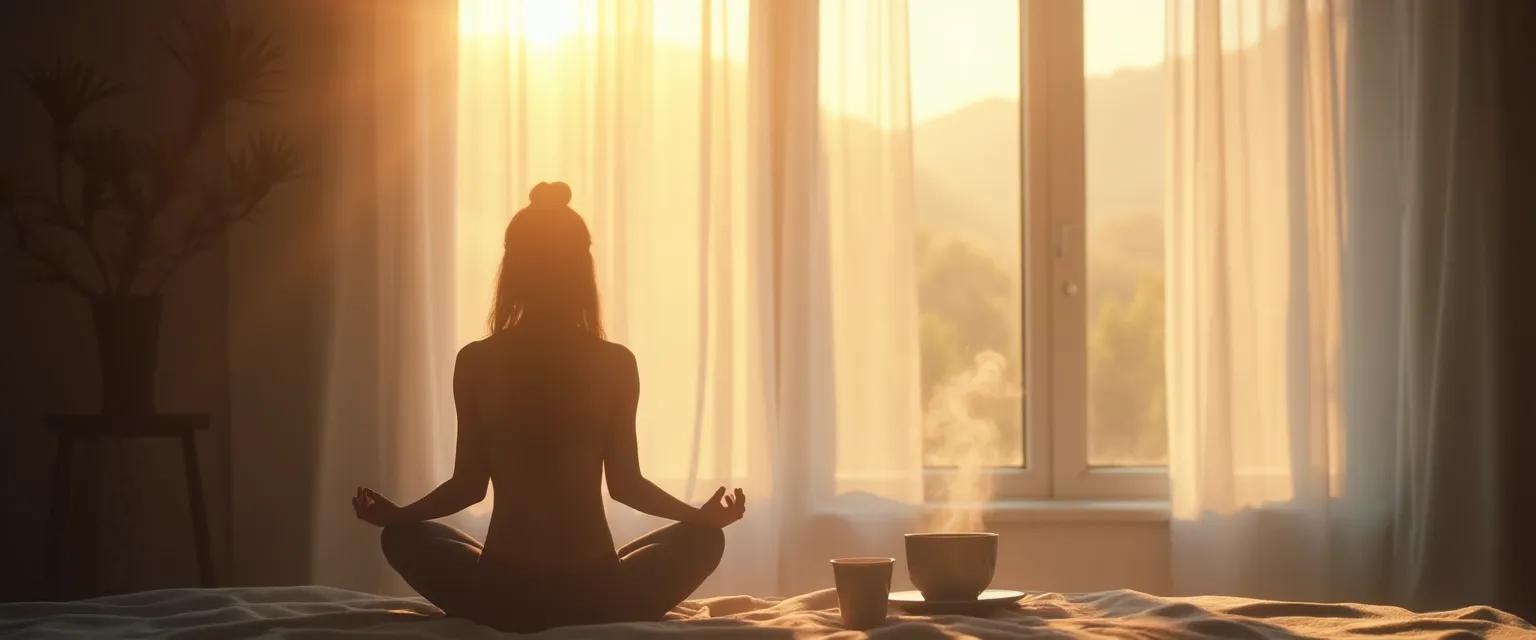5-Minute Mindfulness for Anxiety: Morning Rituals to Start Your Day Calm
Ever notice how anxiety seems to have an alarm clock of its own? That moment when your eyes open and before your feet hit the floor, morning anxiety can already be racing through your system. Implementing mindfulness for anxiety techniques during these critical first moments can transform your entire day. These simple 5-minute rituals create a buffer between sleep and the day ahead, giving you powerful tools to calm your nervous system when it matters most.
Morning anxiety isn't just in your head—it's biology at work. Cortisol, your body's stress hormone, naturally peaks within 30-45 minutes of waking, which explains why anxiety often feels most intense during those early hours. The good news? Brief mindfulness techniques for anxiety relief can interrupt this cycle before it gains momentum. Research shows that even micro-mindfulness practices lasting just minutes can significantly reduce anxiety symptoms and set a calmer tone for your day.
These morning mindfulness for anxiety rituals work because they catch your brain before it falls into familiar worry patterns. They're specifically designed to be done before even leaving your bed—making them accessible regardless of how busy your morning might be.
3 Essential Mindfulness for Anxiety Breathing Techniques While Still in Bed
Breathing serves as your body's built-in anxiety management system, and these targeted mindfulness for anxiety breathing techniques leverage this natural mechanism to restore calm:
The Modified 4-7-8 Morning Breath
This powerful mindfulness for anxiety technique activates your parasympathetic nervous system—your body's "rest and digest" mode. While lying in bed:
- Inhale quietly through your nose for 4 seconds
- Hold your breath gently for 7 seconds
- Exhale completely through your mouth for 8 seconds, making a soft whooshing sound
Repeat just three times—neurologically, this sends signals to your brain that you're safe, counteracting the morning cortisol spike.
The 2-Minute Body Scan Reset
This mindfulness for anxiety practice helps you reconnect with your physical self before worry takes over:
Beginning with your toes and moving upward, bring attention to each part of your body for just a few seconds. Notice sensations without judgment—temperature, texture, weight. This simple scan interrupts anxiety's momentum by anchoring you in physical reality rather than future worries.
Breath Visualization for Anxiety Transformation
Imagine your breath as colored light. As you inhale, visualize calming blue or green light filling your body. As you exhale, see gray or red light (representing anxiety) leaving your system. This visualization paired with breathing creates a powerful mindfulness for anxiety practice that engages multiple brain regions, strengthening your ability to self-regulate emotions.
Gentle Movement and Mindfulness for Anxiety: The Perfect Combination
Movement amplifies the benefits of mindfulness for anxiety by processing stress hormones that accumulate overnight. These gentle exercises can be done without leaving your bed:
Under-the-Covers Stretching Sequence
This mindful movement sequence takes just 90 seconds:
- Gentle spinal twist: Lying on your back, bring knees to chest and gently let them fall to one side, then the other
- Morning reach: Extend arms overhead and legs long, stretching from fingertips to toes
- Knee-to-chest hug: Draw one knee at a time to your chest, feeling the lower back release
The key is pairing these movements with conscious breathing—inhale as you extend, exhale as you release. This mindful movement approach sends powerful signals to your nervous system that counteract anxiety.
The Three-Point Check-In
Before rising, perform this quick mindfulness for anxiety grounding technique:
Place attention on three specific points: your heart center, your breath at the nostrils, and the weight of your body against the bed. Spending just 15 seconds on each point creates a triangle of awareness that anchors you in the present moment, precisely when anxiety tries to pull you into future concerns.
Integrating Mindfulness for Anxiety into Your Daily Morning Routine
For these mindfulness for anxiety practices to create lasting change, consistency matters more than duration. Try linking these 5-minute rituals to existing habits—perform them immediately after your alarm sounds or just before reaching for your phone.
Track your progress with a simple 1-10 anxiety rating each morning. Notice how your baseline shifts over time. Many people find that after just two weeks of consistent practice, morning anxiety decreases by 30-40%.
Remember that mindfulness for anxiety is a skill that strengthens with practice. These brief morning rituals serve as training sessions for your brain, building neural pathways that make calm more accessible throughout your entire day. By dedicating just five minutes each morning to these mindfulness for anxiety techniques, you're not just managing morning anxiety—you're developing resilience that benefits every aspect of your life.




